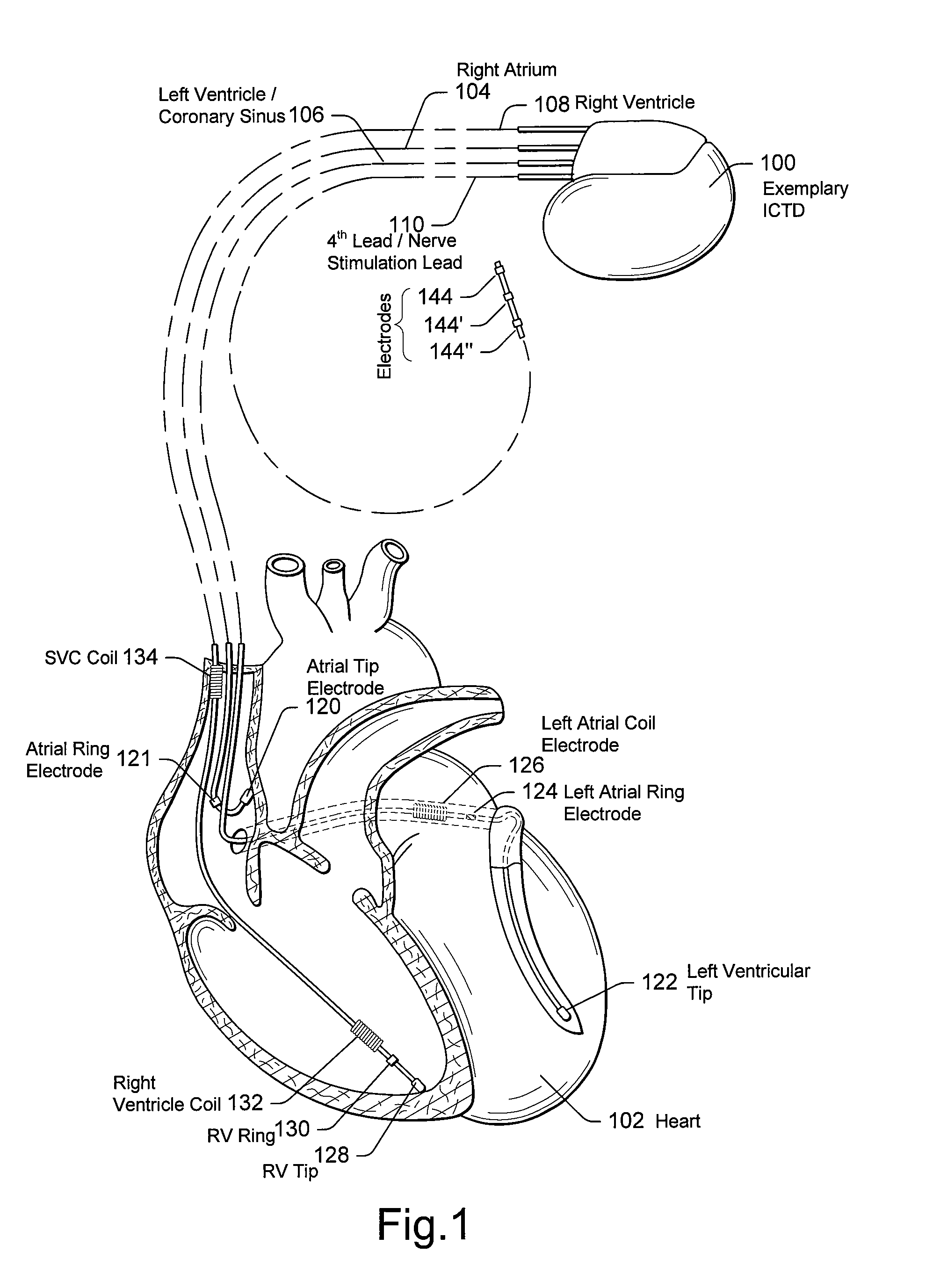Hybrid battery system for implantable cardiac therapy device
- Summary
- Abstract
- Description
- Claims
- Application Information
AI Technical Summary
Benefits of technology
Problems solved by technology
Method used
Image
Examples
Embodiment Construction
[0029]1. Overview[0030]2. Exemplary Environment—Overview[0031]3. Exemplary ICTD in Electrical Communication with a Patient's Heart[0032]4. Functional Elements of an Exemplary ICTD[0033]5. ICTD Programmer[0034]6. System and Method For Hybrid Battery Optimized for ICTD[0035]7. Choice of Power Cells[0036]8. Lithium Ion Polymer Cell vs. Lithium / Silver Vanadium Oxide Cell[0037]9. Lithium Ion Polymer Cell vs. Standard Lithium Ion Cell[0038]10. Charging of Lithium Ion Polymer Cell from Primary Cell[0039]11. Relative Storage Capacities of Different Types of Cells[0040]12. Alternative Embodiments[0041]13. Conclusion
1. Overview
[0042]The following detailed description of systems and methods for a hybrid battery optimized for an implantable cardiac therapy device refers to the accompanying drawings that illustrate exemplary embodiments consistent with these systems and methods. Other embodiments are possible, and modifications may be made to the embodiments within the spirit and scope of the me...
PUM
 Login to View More
Login to View More Abstract
Description
Claims
Application Information
 Login to View More
Login to View More - R&D
- Intellectual Property
- Life Sciences
- Materials
- Tech Scout
- Unparalleled Data Quality
- Higher Quality Content
- 60% Fewer Hallucinations
Browse by: Latest US Patents, China's latest patents, Technical Efficacy Thesaurus, Application Domain, Technology Topic, Popular Technical Reports.
© 2025 PatSnap. All rights reserved.Legal|Privacy policy|Modern Slavery Act Transparency Statement|Sitemap|About US| Contact US: help@patsnap.com



